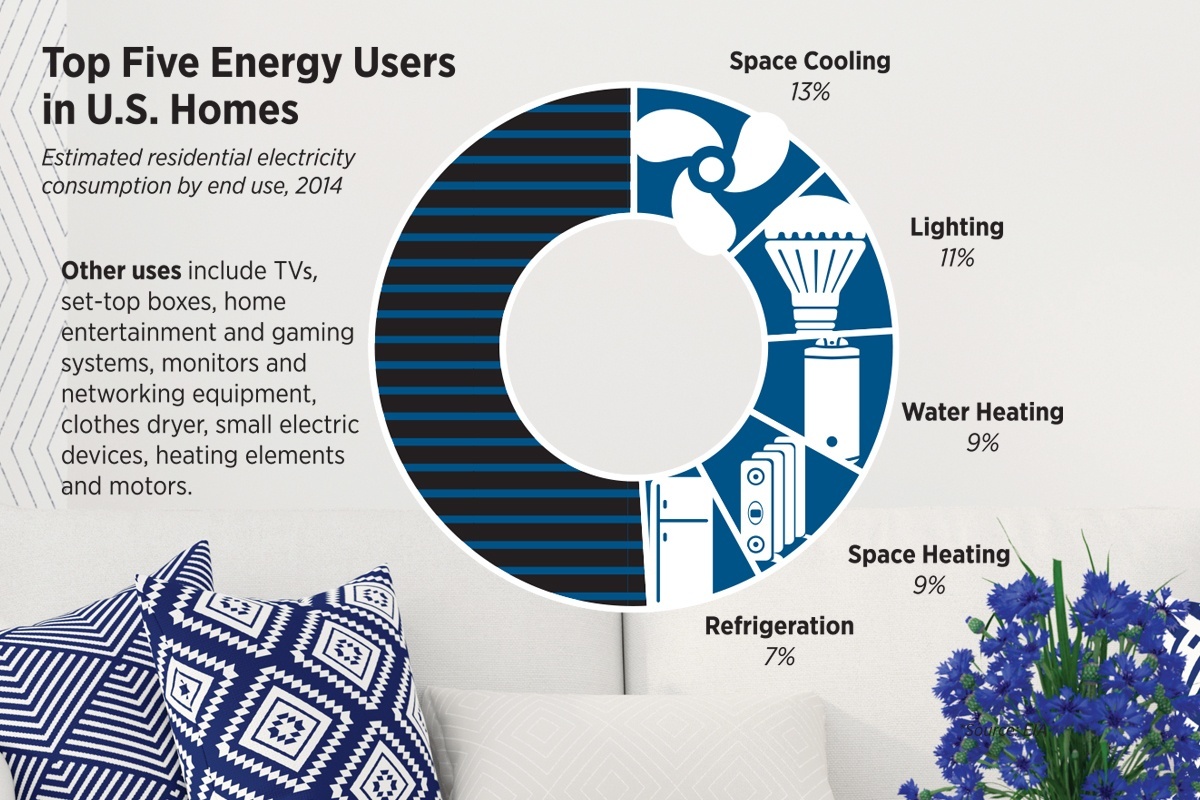While most homeowners would like to be more energy efficient and save money, often it feels overwhelming because we don’t know where to start. How can the average family use less energy, lower its utility bills and still meet daily energy needs? To help jump-start your effort, it’s useful to know the top energy users in your home. With this knowledge, you can choose a path to savings that works best for your family.
According to the U.S. Energy Information Administration, the top five energy users in U.S. homes are:
- Space cooling
- Lighting
- Water heating
- Space heating
- Refrigeration
Adjust the Temperature
Together, home heating and cooling use the most energy and take the biggest bite out of your energy budget. On the bright side, there are ways you can achieve at least 10 percent savings on heating and cooling by taking a few simple low-cost or no-cost steps.
- During warm weather, the recommended indoor temperature is 78 degrees.
- During cold weather, set your thermostat to 68 degrees.
- Clean the filters of your HVAC system to cut costs 5–15 percent.
- Caulk and weatherstrip around windows and doors to prevent conditioned air from escaping to the outdoors.
- No matter what the climate or time of year, proper use of a programmable thermostat can save you 10 percent on your monthly utility bill.
Shine the Light on Savings
Take a fresh look at the lighting in your home. If you still use incandescent lighting, your lightbulbs are operating at only 25 percent energy efficiency. Replacing your home’s five most frequently used bulbs with Energy Star-rated LEDs can save $75 per year. Another easy way to save is to always turn lights off in rooms that are not being used.
Water Heating Efficiency
Just as it’s energy-wise to insulate your roof, walls and floors, it also pays to wrap your water heater with an insulating blanket. This is all the more critical if you have an older unit. Make sure to follow the manufacturer’s instructions. For additional efficiency and savings, insulate exposed hot water lines and drain 1–2 gallons of water from the bottom of your tank annually to prevent sediment buildup.
Put Cash Back in Your Wallet
If your refrigerator was purchased before 2001, chances are it uses 40 percent more energy than a new Energy Star model.
If you are considering an appliance update, a new Energy Star-rated fridge uses at least 15 percent less energy than nonqualified models and 20 percent less energy than allowed by current federal standards.
By understanding how your home uses energy, you can determine the best ways to modify energy use and keep more money in your wallet. For additional ways to save, contact your electric cooperative.


